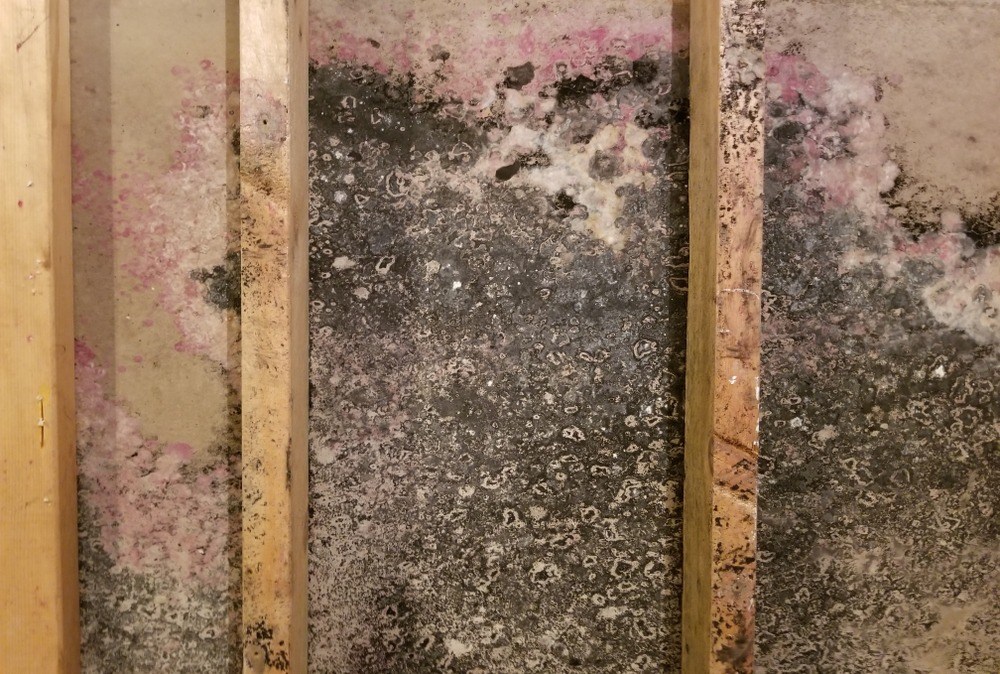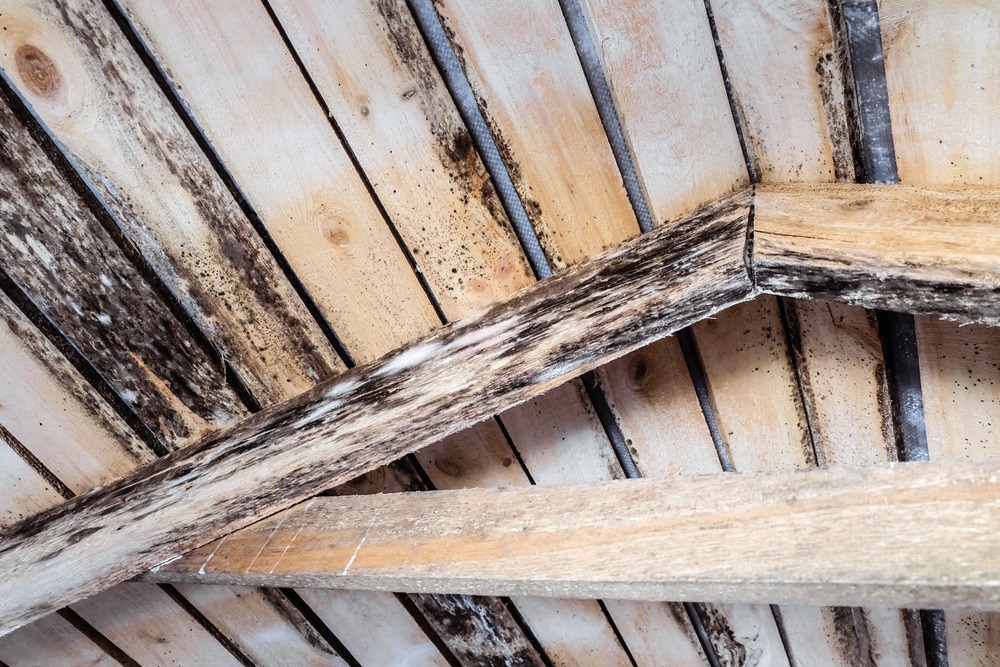- You are here:
- Home »
- Blog »
- Mold Advice »
- One Of The Easy Ways To Clean Mold Off Wood
One Of The Easy Ways To Clean Mold Off Wood

Homeowners who have dealt with mold know what a nuisance it is. They know it whether it’s been on porcelain or whether it’s been on wood. So, how do you deal with mold growth anyway and what is one of the easy ways to clean mold off wood?
To remove mold from wood, you need to vacuum the mold, use detergent to clean it, then remove the stain using white vinegar or chlorine bleach. Only do this if you feel comfortable otherwise contact a professional since removing mold safely can be difficult.
Table of contents
What Is Mold?
Mold is a fungus that thrives on moisture, and it also releases tiny spores into the air. Mold, depending on the type, can cause serious health issues and even lead to death. It is always better to be safe than sorry with mold.
How Does Mold Growth On Wood Happen?
Wet wooden surfaces provide mold with the ideal circumstances for growth. Water takes time to evaporate from wood, and the longer it stays on the surface, the higher the chances of mold growth. Once mold starts to grow, it spreads rapidly on the material since wood continuously picks up water from the environment.
Why Is Mold Growth On Wood Bad?

Mold growth compromises the integrity of the wood. As the bacteria grows and spreads, it weakens the structure of the wood. There comes a point when the wood is no longer stable and will collapse.
This is why you need to take action to eliminate mold the moment you see it growing. Waiting around puts you and others at risk of injury, especially if the wood is part of the structure of your home or the furniture within it.
Steps For Getting Mold Off Wood
Once you’ve spotted mold growth on wood, follow our step-by-step guide below to get rid of it. Please note though that mold spores will release into the air when the mold is being cleaned. In many cases, it is better to let a professional handle the issue, but if you feel comfortable and safe doing so, the steps below can help.
1 – Wear Protective Gear
When cleaning mold, you want to limit exposure to it and the chemicals you use as much as possible. Therefore, wearing protective gear is a must. We recommend you wear the following:
- Goggles to protect your eyes.
- Face mask to protect you from the fungus’ spores.
- Long-sleeved shirt and pants or pajamas to completely cover your body.
- Rubber gloves to protect your hands.
Try to clean the mold off outdoors, if possible. If you have no choice but to clean indoors then use plastic sheets to protect the floor and to keep the mold spores from getting into other areas or rooms. Chemicals such as heavy-duty cleaners and bleach can also ruin the flooring.
2 – Vacuum The Mold
Grab a vacuum cleaner and run it over the area infected with mold. You want to get as much of the mold out with it as possible.
We recommend you use a handheld vacuum equipped with a HEPA filter. The filter will catch all the mold spores and make cleaning the device easier, which you should do immediately after you have vacuumed the wood thoroughly.
3 – Wash The Infected Area
Make a washing agent using a quart of water and a tablespoon of detergent. Mix the two well and spray it on the infected wood. Thoroughly scrub the solution using a sponge and wipe it clean using a dry cloth. Make sure the wood is nice and dry.
Now, you have two options, depending on the toughness of the stains left by the mold.
4a – Use Distilled Vinegar For Light Stains
Light stains will quickly come off with distilled white vinegar. The vinegar kills the remaining mold spores without penetrating the wood. Sprinkle the vinegar on the stained area and scrub it gently with a brush. Let the vinegar air-dry on the surface for an hour. The stains should disappear. If you still notice stains, you can use a wood cleaner to get rid of them.
4b – Use Bleach For Tough Stains
If you have tried distilled white vinegar and a wood cleaner to clean stains but they still remain, then your next option is to use chlorine bleach. But note that this should only be used on unsealed wood.
To create the solution, you need to mix half a cup of chlorine bleach, one cup of warm water, and a tablespoon of dishwashing soap. Spray the mixture onto the surface and scrub it in with a soft-bristled brush. Let the mixture dry for 15 – 20 minutes. Buff it thoroughly using a clean cloth.
Do not let bleach get on you. If this happens, please take appropriate action according to the directions on the bleach container.
5 – Sand The Wood
At times, mold penetrates deep into the wood, and no matter how much you try to clean it the stains remain. In such cases, you need to use sandpaper to sand the wooden surface. If you have never sanded a surface before, you may want to get a professional to do it. Since you can potentially ruin the surface by making it uneven or sanding too much.
Getting rid of mold from wood does not mean it will not grow again. You need to take measures to control the moisture in your home. The easiest way to do that is either by ensuring the area is well-ventilated or by installing a dehumidifier. Both measures keep the presence of moisture low on wooden surfaces, so mold won’t grow and spread.
Final Thoughts: One Of The Easy Ways To Clean Mold Off Wood
Mold growth anywhere is a hazard to everyone’s health and the integrity of the area. Therefore, you need to treat mold and get rid of it as soon as you can (or have a professional do it since this process can be difficult and unsafe). Leaving it alone lets the bacteria thrive and spread, leading to health issues.
So, are you having mold issues with the wood in your home? Let us know what’s going on in the comments below!
About the Author Belal
Belal Rizvi enjoys writing about home improvement and do-it-yourself projects. He is an avid learner of the mold removal and dehumidifiers industry and provides insightful information about it to the readers.
